10 surprising things you might not know about evolution
Evolution. There’s much more to it than is commonly understood.
Evolution is at the heart of how and why we decode complex genomes at Earlham Institute. There’s much more to the story than gradual changes over millions of years.
It’s so hard to fathom the timescales that we normally associate with evolution; from six or seven million years ago, when we shared an ancestor with chimps and gorillas, to now. Six or seven million years for our genome to diverge ever so slightly, so that we still share quite a lot of DNA with our hairy cousins (but definitely not 99%, unless you only count the single point mutations).
If these sorts of timescales are hard to get your head around, so is the sheer amount of DNA we’re talking about. If you discard around 1 billion letters of human and chimp DNA, where the big differences are (bits have been deleted, or duplicated, or flipped upside-down), we’re left with about 99% similar DNA. 99% sounds very similar, yet among the 1% of differences are 40 million changes in the DNA sequence. A DNA sequence of around 3 billion chemical ‘letters’.
Were all of those changes down to fitness and adaptation, or was it just random genetic drift? Are humans more ‘evolved’ than chimps (no, we’ll come to that), or are we simply vessels for our selfish genes that have taken us down alternative paths?
At EI we study evolution and its impact on the systems we work on. We aim to understand crops and how they’ve been domesticated, and how emerging diseases are evolving in front of our eyes to threaten our fields and forests. We want to explore the fascinating adaptations that we see in cichlid fish and koalas, as well as the threats posed to species such as pink pigeons and black footed ferrets through the effects of population decline and inbreeding.
As we’re so involved in this area, we thought we’d bring you ten interesting observations on what evolution is really like, as far as we currently know and understand.
As Theodosius Dobzhansky wrote:

Nothing in biology makes sense except in the light of evolution.

It’s the most common way to describe the findings of a research study on evolution. Every outlet seems guilty of it, reputable or otherwise. ‘Giraffe evolved long neck so that…’, ‘rhino evolved horn in order to….’, ‘elephant evolved trunks because…’
This seems to suggest that giraffes, rhinos and elephants had some sort of say in their evolution, aside from choosing a mate. It’s more likely that long necks just happened to be useful in conditions that they found themselves in. Same with horns, trunks, feet, spines, eyes, noses, ears and kidneys.
There’s no grand plan or design of nature. Each of us is slightly different and, over millions of years, these differences may increase or decrease. You wouldn’t say the big bang happened in order to produce life on Earth, would you?
Evolution, let’s stress it again, does not have a purpose. There are plenty of mutations in genes that are neutral and have absolutely no positive or negative effect on survival, and just happen to get passed on. Over the generations, these neutral mutations can increase or reduce in their frequency and even get fixed so that all individuals in the species contain that version of the gene. These ‘fixed’ mutations then count as a fixed difference between two species. Much of what we see in nature came about through this evolutionary process we call random genetic drift.
Genetic drift is about the randomness that we see from generation to generation. Its effects become stronger in small populations, which tend to lose genetic variation as different versions of genes are lost. This often happens when populations go through a bottleneck, which sees their numbers drastically reduced. When this happens, some versions of a gene can be lost, by chance, and the remaining ones become the prevalent version.
Take humans as an example. African populations have the highest genetic diversity of any human populations on Earth, probably because small groups of migrants left Africa with a much reduced genetic pool. The effects of genetic drift on these populations is still seen worldwide. Put simply, there is more genetic variation between Africans than there is between Africans and Europeans.
Mark McMullan tells me: “Genetic drift is really a force that operates right across the genome. It is the random changes in the frequencies of mutations from one generation to the next. These random changes are really caused by the chance involved in two individuals meeting and having children. They only select based on a few characteristics and the rest are random. This randomness affects all regions of the genome alike and natural selection operates in the face of that randomness, it must overcome it.
“As populations get smaller the randomness gets larger. That means that selection must be huge to overcome the random fixation of variants. Genetic drift is the force that selection must push against in order to be useful. That is one reason why small populations are of conservation concern because, even if one individual has the super mutation to save the species, it must overcome the massive chance effect of random genetic drift.”
Natural selection, adaptation, survival of the fittest: these are all clearly demonstrable in a range of lifeforms, but there’s much more to the story, and lots of effects going on at the same time, which are mainly down to chance.
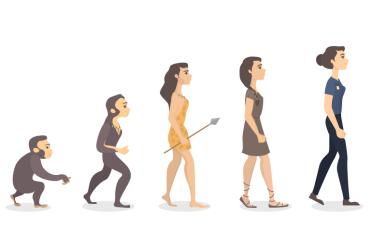

Genetic drift is about the randomness that we see from generation to generation. Its effects become stronger in small populations, which tend to lose genetic variation as different versions of genes are lost.

Sabrina Ward explains, “Empedocles [Greek philosopher, Sicily, 495-435 BC] believed that the universe consisted of four elements: air, water, earth, and fire. The forces of attraction and repulsion acted on the elements, causing them to create the universe and everything within.
“He believed these forces formed humans and other living creatures from mismatches of different body organs. He then suggested that as desirable combinations persisted, the others died off.
“Lucretius [Roman philosopher, born 94 BC in Pompeii] created a follow up theory. He suggested that that humans with the best features for strength, speed, or intelligence survived while the rest died off. He also added that the elements and forces that Empedocles wrote about only created humans by chance.
“Anaximander [Greek philosopher, Miletus, 610 - 546 BC] wrote that a species could evolve to create another species - he suggested that a fish birthed the first human.”
For all my preamble about unfathomable timescales, it might come as a surprise to know that evolution can be very quick. We can even see it happen in real time, if we’re lucky (or unlucky).
If we’re talking rodents, for example, we now know that certain mice went through a burst of rapid evolution between three and six million years ago after a single genetic mutation in just the right (or chance) spot for that to happen. The mutation happened to affect a really crucial transcription factor involved in lots of processes, including how DNA is organised, so the knock-on effect was huge.
The downstream effect was that there was lots of reshuffling of the genome due to the activation of “jumping genes” (retrotransposons), which was the real driver behind the species diversity, and fixed about two or three thousand new loci in a species specific way in the case of the Ryukyu mouse, Mus caroli, after it diverged from the domestic mouse, Mus musculus.
In cichlid fish in Africa we can see a similar burst in evolution, which is known as adaptive radiation, and has seen the fish develop into thousands of species with many different shapes and forms. The coolest thing about this is that in separate lakes, cichlids have developed similar characteristics in response to similar conditions, in convergent evolution (another exciting quirk of life).
We can see evolution occurring over much shorter timescales in smaller lifeforms. Take bacteria, for example, which are actively becoming resistant to antibiotics. Some have become resistant to so many drugs that they are fast becoming almost impossible to treat. If you track an HIV infection as it proceeds to AIDS, you can see the mutations that occur that lead to disease. This happens within years, not millennia.
There’s a similar situation even in the not-so-small lifeforms. We spend a lot of money on pesticides and herbicides to eradicate pests and weeds, but both of these have thrown up all sorts of adaptations over the last half century to evade death and continue to flourish.
All it takes is one or two aphids to obtain a chance mutation that means they don’t die due to a pesticide. Selection on these individuals outweighs drift and those aphids reproduce, and suddenly there are lots of aphids that can pass on this resistance. Same with bacteria, same with weeds.
If you throw something in the way of evolution, some random mutation will find a way around it - and quickly. If not, then there’s another extinct species to add to the long list of 99% of all species that ever lived.
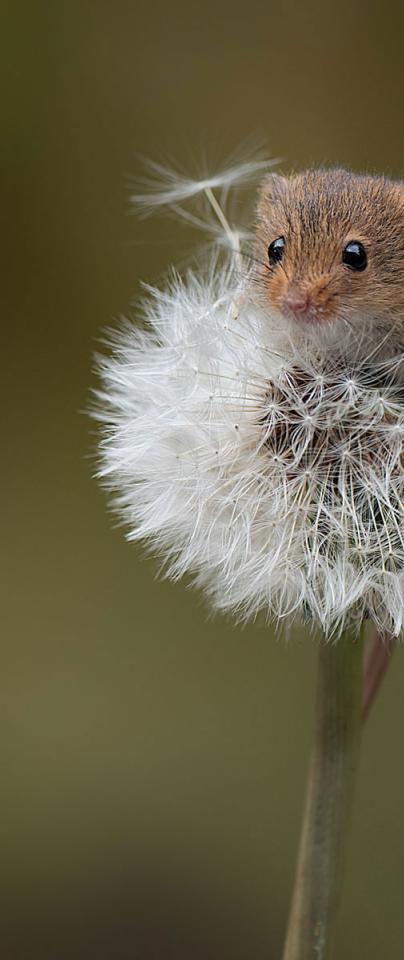

If we’re talking rodents, for example, we now know that certain mice went through a burst of rapid evolution between three and six million years ago after a single genetic mutation in just the right (or chance) spot for that to happen.

As much as we like to think that everything revolves around us, it doesn’t (although a substantial number of people still think that the Sun orbits the Earth - SPOILER, it doesn’t!).
We tend to look at the universe from an anthropocentric perspective (Gods notwithstanding), which makes sense, but tends to see us putting people ‘on top’ of the tree of life (read: web of life). There might even be a belief that humans are somehow ‘more’ evolved than chimps, or any other life form, but this is simply not the case.
Humans have had exactly the same amount of time to evolve since the beginning of life on earth as any other organism on earth. We’re the tip of a very long branch that has somehow survived the perils and passages of time over the last 3.5 billion years or so. We’re as ‘evolved’ as Salmonella, a carrot, or Paul the psychic octopus.
The “tree of life” can make it look a bit like a procession, from bacteria at the ‘bottom’ to humans at the ‘top’.
It is far from clear cut, however. For a start, there is biology’s dark matter, which is comprised of millions upon millions of different species, many of which we have yet to discover, of protists. These organisms can be more plant like, or more animal like. Some of them act a bit like animals and plants at the same time, roving around using an eyespot to guide them, eating other small organisms, while simultaneously using sunlight to make sugars through photosynthesis.
Some of those organisms share very similar characteristics with you or me. The rhodopsins in our eyes, for example, which help us to form an image of the world, have ancient ancestors in the eyespots of green algae, which come far closer to plants in the grand scheme of things. Of course, plants don’t have eyes.
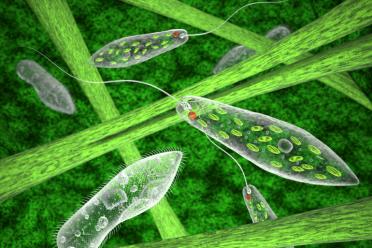

Humans have had exactly the same amount of time to evolve since the beginning of life on earth as any other organism on earth. We’re as ‘evolved’ as Salmonella, a carrot, or Paul the psychic octopus.

You have to prioritise – Rather than a tree, it’s good to imagine a web of life. This is especially important, as the more we learn about the mechanisms of evolution, the more we realise that the idea of there being distinct species is often a loose concept.
In bacteria, for example, viruses have a huge role to play in driving evolution, while bacteria also like to exchange genetic material willy nilly, through a process known as horizontal gene transfer, which is one of the drivers of the spread of antibiotic resistance. Even among Homo sapiens there are about 42 or so virus genes that have become part of our genetic makeup after infecting us, then staying with us down our distinct evolutionary path.
Let’s face it, most of us have a little Neanderthal or Denisovan in us, long after these species diverged from our common ancestors. Put simply, evolution is not linear, but involves lots of criss-crossing lines (read this article we wrote about elephant evolution, for a start).

In bacteria, for example, viruses have a huge role to play in driving evolution, while bacteria also like to exchange genetic material willy nilly, through a process known as horizontal gene transfer, which is one of the drivers of the spread of antibiotic resistance.

Nor will it stop once we are long gone. Life will go on, perhaps developing some other intelligent being that will find old copies of Viz amongst piles of non-degradable waste, wondering what to make of it all.
While we’re here, however, we will continue to evolve. Populations will change, characteristics will change. Genes will drift. Natural selection will fight against that drift. Adaptation will occur. Just think of the physical changes that have seen people in Northern Europe become paler in climates that lack sunlight, more for the maintenance of vitamin D3 production than anything else, compared to the darker skin of people who inhabit the sunnier areas of the globe, require a little natural sunscreen and have no lack of vitamin D3 due to the abundance of UV radiation.
All of that happened in the last 60,000 years, which isn’t long in the grand scheme of things. Blue eyes are no older than 10,000 years, which makes them about as old as domestic wheat.


Blue eyes are no older than 10,000 years, which makes them about as old as domestic wheat.

Evolution has produced umpteen trillions of combinations during the short history of life on earth, the vast majority of which has been lost forever. From what we have left, it seems as though there are some organisms that are more complex than others. Humans, with our 39 trillion cells (and a few more, we’ll come back to this), seem more complex than an amoeba, say, which survives as a single cell.
Not so fast though. There is an amoeba with a genome measuring over 600 billion base pairs in length, which is about 300x larger than the human genome.
Natural selection can lead to greater simplicity. Exciting explorations into caves absent of light reveal insects and other life forms that look very similar to those above ground, except they have lost their eyes, for example. What needs eyes in perpetual dark?
Many species across the tree of life have, indeed, become more simple rather than complex. There are several researchers these days interested in whether our ancient animal ancestors, which gave rise to humans, snails, sea sponges and anemones, for example, were more complex than we had previously assumed. Perhaps some of the very simple seeming sponges and placozoans are a lot more simple than the most recent common ancestor which we all share.
Read this cool article in New Scientist for more insights from a phenotypic perspective, one great example being that the ancestors of brainless starfish and sea urchins used to have brains.

Many species across the tree of life have, indeed, become more simple rather than complex.

Onto some strange quirks of evolution.
There are more bacterial cells living in and on you than there are human cells that make up your body. There are fungi and archaea, too, and together these non-human cells make up the microbiota which helps us to digest food or defend against disease. Our microbiota is pretty much established by the age of three years old. It’s passed on in the birth canal and picked up from the environment, such as the food (or soil) that we eat as toddlers.
You might think, yes but these microbes aren’t what make me, me, but there is increasing evidence that we rely on our gut microflora for much more than digestion or protection. What about the gut-brain axis? They say you are what you eat, and it’s not as far-fetched as you might have thought. The microbes in your stomach go some way to informing your thoughts and feelings.
So who is pulling the strings? Are we just vessels for the microbes that live in our guts? We are certainly beginning to understand in much greater depth the effect that microbial communities have on our own bodies, and perhaps our mind.
If this sounds far-fetched, there is evidence to suggest that the toxoplasma parasite (which we catch from cats, and possibly pink lamb) might cause us to be more extroverted, which makes evolutionary sense, as the parasite is known to ‘manipulate’ rodents (a secondary host) through remodelling their DNA slightly, making them less likely to avoid the cats which the parasite relies on to reproduce (the primary host) - thus increasing the likelihood that the parasite does indeed reproduce.
Brain-controlling parasites are pretty common. There are fungi that turn insects into zombies, which climb to the highest possible point before succumbing, allowing the fungus spores that erupt from fruiting bodies of the insect corpse to spread far and wide on the wind - even persuading other insects to come and inspect the corpse and pick up the infection themselves.
Then there are the wasps, which inject venom and eggs into the prey of their larvae, which only hatch once the unfortunate victim has been brainwashed into collecting food and making a nice little parasite nest for its incumbent.
It makes you question your ideas on free will, whatever that might be.
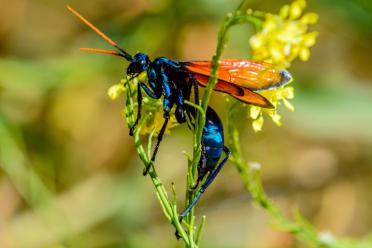
While we’re on the subject of free will (or lack thereof)... if you thought your genome, and all of the genes in it, was working to the benefit of you, your offspring and the human species as a whole, think again!
Dawkins’ selfish gene theory is still apt, and the more we discover about reproduction, the more ‘selfish’ genetic elements seem to appear (not that they care about their own survival).
Did you know about the arms race going on inside your gonads? It’s a dangerous world, if you’re a chromosome, with some genes proving lethal to others long before they are packaged into eggs or sperm. In this instance, it’s hard to tell whether that’s selfish or stupid, but it happens, particularly with regard to genes on the X and Y chomosomes, which compete with each other and give us sex ratio skewing among other things.
Take, for example, the parasitic wtf genes. These are genes that cause an effect called meiotic drive, which is a superbly twisted evolutionary effect that causes some genes to kill gametes (eggs and sperm) that don’t contain them. The way they do this is to produce both a poison and an antidote, while only gametes that contain them can produce the antidote, thus ensuring their survival against all the other combinations. In a twist of fate, this can cause infertility, hence where selfish can tend towards the foolish, which is perhaps a metaphor for life.
Put simply, natural selection doesn’t always do what’s best for the individual, especially when there are selfish genetic elements involved (read this book, ‘Genes in Conflict’, if you have the time). Genomes, in this way, can be viewed as more of a malleable community, rather than a blueprint for a species of life.
What does this mean for evolution?
As long as you’re happy to accept that life and the universe is simply the product of chaos and chance, then it’s just another explanation of what we see on our fleeting journey through the cosmos.
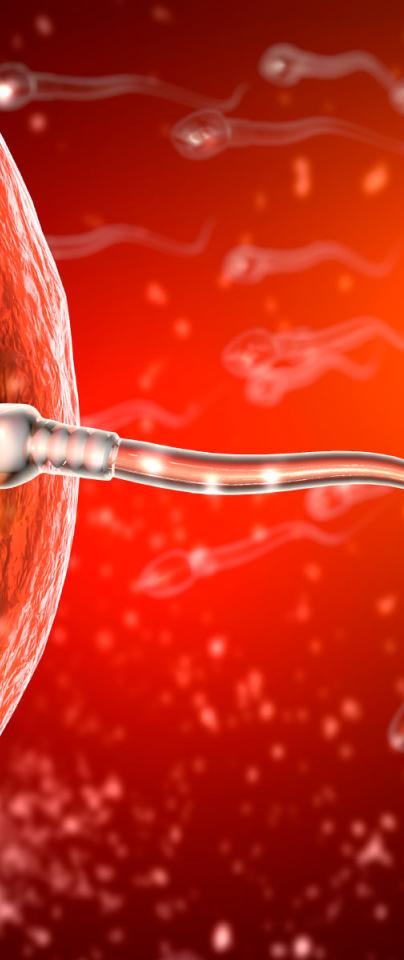

Did you know about the arms race going on inside your gonads? It’s a dangerous world, if you’re a chromosome, with some genes proving lethal to others long before they are packaged into eggs or sperm. In this instance, it’s hard to tell whether that’s selfish or stupid, but it happens.
